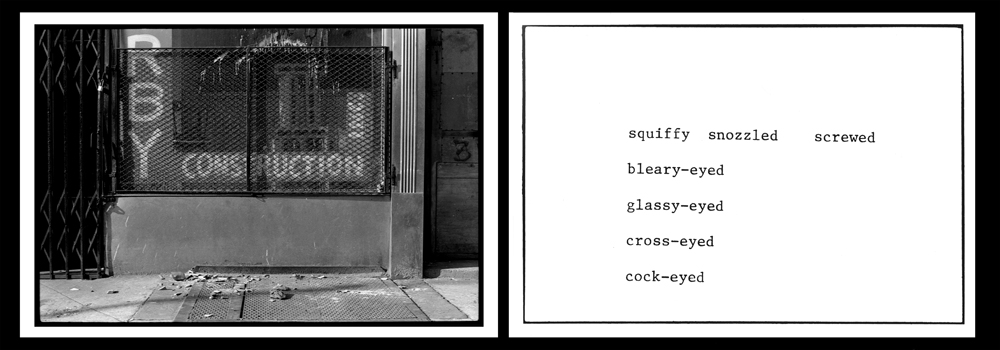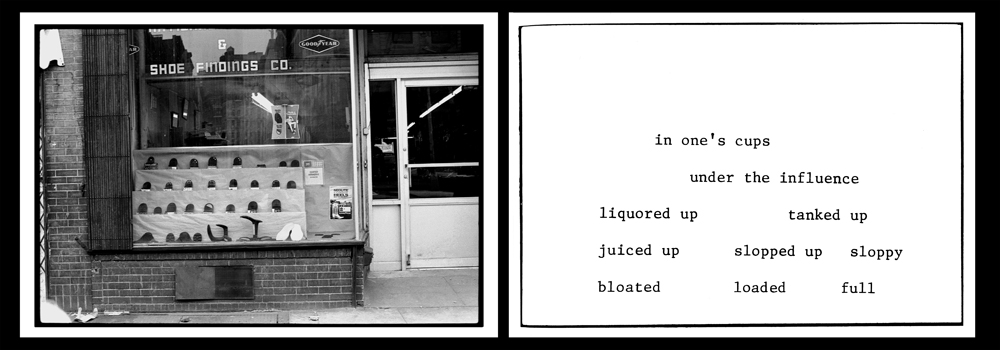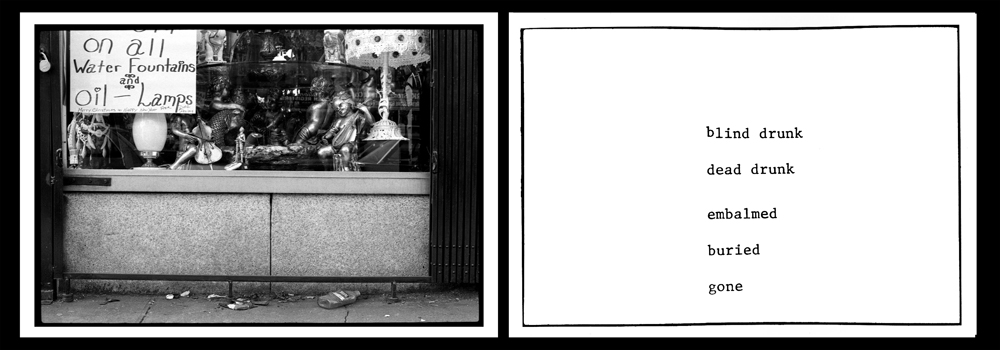The Bowery in two inadequate descriptive systems
1974–75
The Bowery in two inadequate descriptive systems forms part of Rosler’s ongoing exploration of urban life and the representation of poor and disenfranchised groups. The work consists of 24 framed panels, each juxtaposing a photograph of a loosely covered typewritten page with a photograph of a storefront, entrance, or façade (the first three panels lack the urban scenes). The pictures were taken by Rosler along the Bowery, a famous street in the lower part of Manhattan. The neighborhood had for decades been widely identified with alcoholism and transiency, but also for lofts rented by artists, as well as clubs and small theaters. The typewritten words refer to intoxicated states and intoxicated people and are taken from journals kept by Rosler in 1974 prior to making the work. But the words neither describe the photographs (as the rigorous serial pairings might seem to suggest) nor, conversely, do the photographs offer any illustrative explanation of the texts. By not relating text and image in a functional way, Rosler opens up an unoccupied field of association between the two systems. It has often been mentioned that her views of the Bowery (with no people, concentrating on the traces of street life) are strikingly different from the way this area and other so-called “trouble spots” usually appear in documentary photography. In this way, the artist breaks through the problem of conventional reportage, which commonly equates the subjects depicted with the underlying social problem—a issue often encountered in the relationship between photographer and subject, and which can be observed in American documentary photography in the tradition of street photography.





